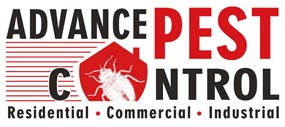Flies Control
Flies have a mobile head with a pair of large compound eyes and mouthpieces for piercing and sucking. Their wing structure gives them great flight maneuverability, and the claws and pads on their feet allow them to stay on smooth surfaces. Flies are subjected to complete metamorphosis; the eggs are laid on the larval food source and the larvae, which lack true limbs, sometimes live inside their food source in a protected area.
The habits of filth flies favor the spread of bacteria and other organisms that cause disease. Filth flies often feed and lay eggs on garbage, manure, and carriage before landing on them and contaminating human food and food preparation surfaces. House flies regurgitate their stomach contents on food while fed, to liquefy it until it is swallowed. They can also contaminate food and surfaces by defecating.
LARGE FLIES
House Fly
The common house fly is a slender gray fly, 1⁄4-inch long, with four dark stripes on its body’s middle section (thorax). House flies typically lay eggs on the garbage and animal feces. The eggs hatch white, legless maggots (the larval stage) and grow to about 1⁄2 inch. They form a dark brown cocoon, known as a puparium, and later emerge as adult house flies capable of flying one or two miles in search of suitable egg laying areas.
Blow Flies
Blow flies are so-called because larvae live inside dead animal bodies, creating a bloated appearance in the carrion. They’re drawn to garbage too. Blow flies are around or slightly larger than the size of house flies. They were called “bottle flies” because they resemble colored glass bottles in their shiny blue and green color, although some species are bright black or bronze. Large numbers of these indoor flies usually indicate the existence of a dead animal within the building, such as a mouse or pigeon.
Flesh Flies
Appropriately named, flesh flies usually look for carrion or meat scraps to lay their eggs on. Adult flesh flies are dark-coloured (gray or black) like house flies. Common species have a thorax with three dark stripes. They have a checkerboard pattern on the abdomen and are slightly larger than house flies.
Cluster Fly
Cluster flies are mentioned here not associated with filth, because they are a common household pest. These often resemble house flies, but keep their wings parallel to the body, just like the house flies do in a triangular configuration. Cluster flies are coated with fine golden feathers, and do not have thorax stripes. These flies are extraordinary in that they lay eggs on earthworms. The larvae devour the worms. In the fall, adult cluster flies often invade homes for a dry, sheltered place to spend the winter in, particularly attics. Unlike other filth flies, exclusion is the principal means of managing cluster flies, i.e. sealing buildings to keep them from joining.
Fly prevention
There are several different ways in which homeowners can get flies in their homes. The insects can invade houses through open windows and doors on food products (fruit flies) or drift in. Decaying organic matter in drains can also draw them in. They can even infest dead animals inside the home in walls, attics or other secret places. Some species tend to winter indoors, and are drawn to sunny areas of buildings’ home and upper floors.
The best way to avoid home flies is by diligent cleaning, including collecting garbage regularly, ensuring that all counter surfaces are kept clean, checking that all windows and doors are properly screened, and careful disposal of any rotting food matter. If you have animals, stay on top of eliminating waste by emptying litter boxes and picking up dog waste around the yard.
If a fly infestation is suspected, it is necessary to contact a licensed pest control professional to perform an inspection, specifically looking for any places where fly eggs may be deposited.
What should you do?
It’s never easy to stop flies from getting into your property. Some fly species can mature in just seven days, from eggs to adults. There are easy ways to recognize the symptoms of an infestation. A proactive approach to get rid of flies will also help you avoid more expensive fly elimination treatments if an infestation gets more serious.
Hiring Advance Pest Control is your most suitable option as we will discuss your pest problem, arrange a free site survey & provide a quote along with recommendations. We’ll make regular follow-up visits to ensure your problem is resolved & offer further support through online reporting.
